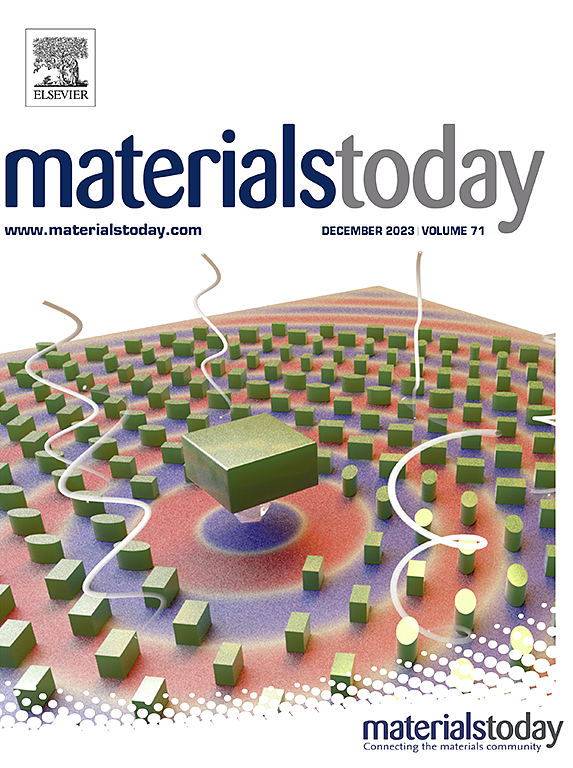Chelating diamine surface modifier enhances performance and stability of lead halide perovskite solar cells
IF 21.1
1区 材料科学
Q1 MATERIALS SCIENCE, MULTIDISCIPLINARY
引用次数: 0
Abstract
Mono- or di-ammonium cations are commonly used to enhance the performance and stability of perovskite solar cells (PSCs) via surface defect passivation. However, their effectiveness is still limited by the little understanding of the structure–property-performance relationship of the capping layer/3D perovskite stack. In this work, two diamine spacers with similar chemical composition but different molecular geometry are tested: 4,4′-Dithiodianiline (2S) and 4,4′-Ethylenedianiline (ET). In 2S, the two amine groups are spatially close owing to a torsion in the backbone of the molecule. Instead, in ET the amine groups are at the maximum distance. The torsion allows 2S to bind to neighboring vacancy sites at the surface of the perovskite lattice, enhancing its passivation capabilities with respect to ET. The 2S spacer forms a 2D metal halide phase at the perovskite surface, which offers better charge extraction properties than the 1D phase induced by ET spacer. In solar cells incorporating 2S, these properties result in a power conversion efficiency (PCE) of 20.72 %, improved from the 18.36 % PCE of the reference and almost no loss of efficiency after 1000 h under constant illumination in inert atmosphere.

螯合二胺表面改性剂提高卤化铅钙钛矿太阳能电池的性能和稳定性
单铵或二铵阳离子通常通过表面缺陷钝化来提高钙钛矿太阳能电池(PSCs)的性能和稳定性。然而,由于对封盖层/三维钙钛矿堆的结构-性能-性能关系的了解很少,它们的有效性仍然受到限制。在这项工作中,测试了两种化学成分相似但分子几何形状不同的二胺间隔剂:4,4 ' -二硫代苯胺(2S)和4,4 ' -乙二苯胺(ET)。在2S中,由于分子主链的扭转,两个胺基在空间上是接近的。相反,在ET中,胺基在最大距离上。这种扭转可以使2S结合到钙钛矿晶格表面邻近的空位上,增强了其相对于ET的钝化能力。2S间隔剂在钙钛矿表面形成二维金属卤化物相,比ET间隔剂诱导的一维相具有更好的电荷提取性能。在含有2S的太阳能电池中,这些特性导致功率转换效率(PCE)达到20.72%,比参考的18.36%的PCE有所提高,并且在惰性气氛中恒定照明1000小时后几乎没有效率损失。
本文章由计算机程序翻译,如有差异,请以英文原文为准。
求助全文
约1分钟内获得全文
求助全文
来源期刊

Materials Today
工程技术-材料科学:综合
CiteScore
36.30
自引率
1.20%
发文量
237
审稿时长
23 days
期刊介绍:
Materials Today is the leading journal in the Materials Today family, focusing on the latest and most impactful work in the materials science community. With a reputation for excellence in news and reviews, the journal has now expanded its coverage to include original research and aims to be at the forefront of the field.
We welcome comprehensive articles, short communications, and review articles from established leaders in the rapidly evolving fields of materials science and related disciplines. We strive to provide authors with rigorous peer review, fast publication, and maximum exposure for their work. While we only accept the most significant manuscripts, our speedy evaluation process ensures that there are no unnecessary publication delays.
 求助内容:
求助内容: 应助结果提醒方式:
应助结果提醒方式:


